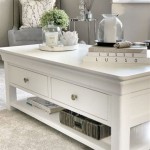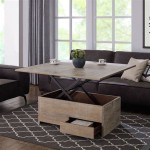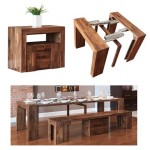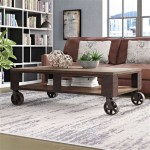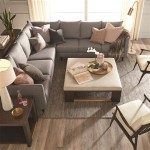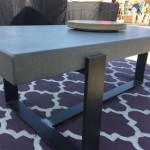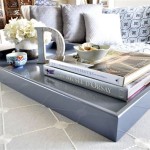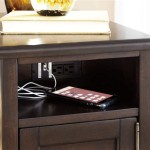How To Choose The Right Ornate Coffee Table Legs for a Metal Base
Selecting the appropriate ornate coffee table legs to complement a metal base requires careful consideration of various factors, including style, size, material, and compatibility. The goal is to create a visually appealing and structurally sound piece of furniture that enhances the aesthetic of the surrounding space. This article provides a comprehensive guide to navigating the selection process, ensuring a successful outcome.
The coffee table serves as a focal point in many living rooms, and the legs play a crucial role in defining its overall character. Ornate legs, characterized by intricate detailing and decorative elements, can introduce a touch of elegance, sophistication, or vintage charm. Pairing such legs with a metal base offers a compelling contrast, balancing the ornate with the industrial or modern. However, achieving a harmonious blend requires a thorough understanding of design principles and practical considerations.
Matching Style: Harmonizing Ornate Legs with Metal Base Aesthetics
The first key step in selecting ornate coffee table legs involves aligning the style of the legs with the aesthetic of the metal base. A mismatch in styles can result in a disjointed and visually unappealing piece. The metal base itself often dictates a certain design direction. For example, a wrought iron base suggests a more traditional or rustic style, while a sleek, stainless steel base leans towards modern or contemporary designs.
Consider the specific type of metal used for the base. Blackened steel conveys a sense of industrial strength and durability, pairing well with ornate legs that possess a vintage or antique feel. Legs adorned with floral motifs, scrollwork, or cabriole shapes can complement this base style effectively. Conversely, a chrome or brushed nickel base exudes a more polished and refined look, harmonizing with ornate legs that feature geometric patterns, clean lines, or a more streamlined silhouette. Art Deco-inspired designs, with their emphasis on symmetry and geometric ornamentation, can be a particularly strong choice for such pairings.
The level of ornamentation should also be considered in relation to the base. If the metal base is highly detailed and intricate, choosing ornate legs with simpler detailing might be preferable to avoid overwhelming the overall design. Conversely, a minimalist metal base provides an opportunity to showcase more elaborate and heavily ornamented legs. The key is to achieve a balance that allows both the base and the legs to contribute to the overall aesthetic without competing for attention.
Furthermore, the existing décor of the space should influence the style selection. If the room features a predominantly modern aesthetic, ornate legs with a contemporary twist, such as thoseincorporating metal accents or geometric detailing, may be the most suitable choice. In a more traditional or eclectic setting, ornate legs with classic designs and vintage finishes can provide a seamless and harmonious integration.
Determining Size and Proportion: Ensuring Structural Integrity and Visual Balance
The size and proportion of the ornate coffee table legs are critical factors that influence both the structural integrity and visual balance of the finished piece. The legs must be strong enough to support the weight of the tabletop and any items placed on it, while also maintaining a visually pleasing ratio relative to the size and shape of the metal base and the tabletop itself.
The height of the legs directly determines the overall height of the coffee table. A standard coffee table height typically ranges from 16 to 18 inches, but this can vary depending on personal preference and the height of surrounding seating. Consider the height of the sofa and chairs in the room to ensure that the coffee table is easily accessible and comfortable to use. If the seating is particularly low, a lower coffee table may be more appropriate, while higher seating might necessitate a taller table.
The thickness of the legs is another important consideration. Thicker legs provide greater stability and support, making them suitable for larger or heavier tabletops. However, excessively thick legs can appear bulky and disproportionate, especially when paired with a delicate metal base. Conversely, thin legs may not provide sufficient support for a heavy tabletop and can create a sense of instability. A careful balance between strength and aesthetics is essential.
The number of legs required also depends on the size and weight of the tabletop. For smaller coffee tables, four legs positioned at the corners may be sufficient. However, larger or heavier tables may require additional legs in the center for added support. The placement of the legs should be strategically planned to distribute the weight evenly and prevent sagging or warping of the tabletop.
When selecting ornate legs, the depth of the ornamentation should also be considered in relation to the size of the legs. Heavily ornamented legs may appear overwhelming if they are too small, while minimal ornamentation may be lost on larger legs. The scale of the detailing should be proportionate to the overall size of the legs to create a visually harmonious effect.
Material Compatibility and Durability: Choosing Long-Lasting and Complementary Materials
The choice of materials for the ornate coffee table legs profoundly impacts their durability, aesthetic appeal, and compatibility with the metal base. Several materials are commonly used for ornate legs, each possessing unique characteristics and advantages.
Wood is a classic and versatile material that offers a wide range of options for ornate legs. Hardwoods such as oak, maple, and walnut are durable and resistant to wear and tear, making them suitable for high-traffic areas. Softwoods such as pine and cedar are less expensive but may require more care and protection. Wood can be easily carved and shaped into intricate designs, allowing for a high degree of customization. It can also be stained or painted to match or complement the metal base.
Metal is another viable option for ornate coffee table legs, particularly when paired with a metal base. Cast iron, steel, and aluminum are commonly used for metal legs. Cast iron offers a traditional and robust look, while steel is strong and durable, and aluminum is lightweight and corrosion-resistant. Metal legs can be powder-coated or painted to protect them from rust and scratches, and they can be crafted into various ornate designs using techniques such as laser cutting and welding.
Resin is a less traditional but increasingly popular material for ornate legs. Resin is a synthetic material that can be easily molded into intricate shapes and designs. It is also relatively inexpensive and resistant to moisture and damage. Resin legs can be painted or finished to resemble wood or metal, offering a versatile alternative to natural materials. However, resin legs may not be as durable as wood or metal and may be more susceptible to cracking or breaking under heavy loads.
When selecting materials, consider the environment in which the coffee table will be placed. Wood legs may be susceptible to damage in humid or damp environments, while metal legs may rust if exposed to moisture. Resin legs are generally more resistant to environmental factors but may not be as aesthetically pleasing as natural materials. The finish of the legs should also be considered. A durable finish, such as varnish, lacquer, or powder coating, can protect the legs from scratches, stains, and fading.
Finally, ensure compatibility between the materials of the legs and the metal base. Avoid pairing disparate materials that clash aesthetically or structurally. For instance, combining delicate wooden legs with a heavy, industrial metal base may not be visually appealing or structurally sound. Strive for a harmonious blend of materials that complement each other and enhance the overall design of the coffee table.
By carefully considering style, size, material, and compatibility, one can effectively select ornate coffee table legs that perfectly complement a metal base, resulting in a visually stunning and structurally sound piece of furniture.

Guide On Diy Live Edge Table With Metal Legs Flowyline Design

Essential Guide To Table Leg Styles Choosing The Perfect Match For Yo Modern Bungalow Furniture And Design

Coffee Table Base 106 Namu Modern Furniture Flowyline Design

Table Leg Trends For 2024 Design59

Table Base 325 Filar 28h Diy Metal Legs Furniture Flowyline

Where To Find The Best Industrial Metal Table Legs In Top Suppliers And Budget Friendly Options For 2024 Wood Create

How To Choose A Coffee Table That Is Perfect For Your Living Room Huset

Exploring The World Of Table Leg Styles A Beginner S Guide

Buy Metal Coffee Tables In At Best 2025 Ouchcart Only

Creative Diy Table Legs For Fab Custom Furniture Girl In The Garage
Related Posts

